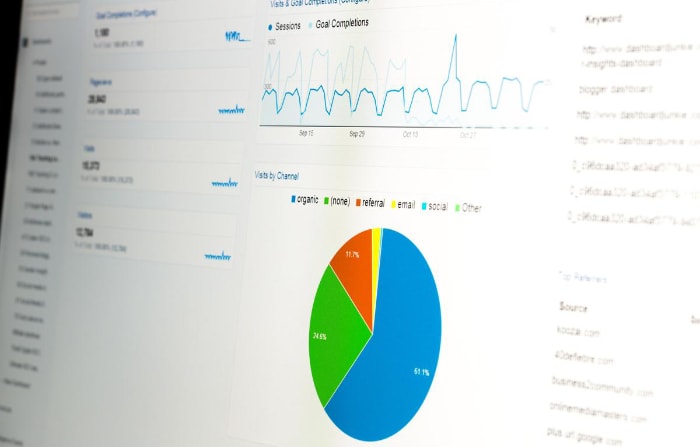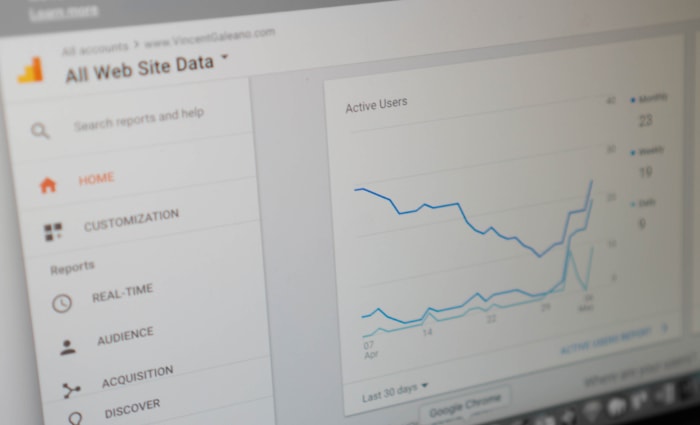Impressions vs. Reach vs. Engagement: Explained

Digital metrics have steadily transformed the marketing landscape, acting as compasses guiding businesses towards informed decisions. These metrics, varying in nature, offer a glimpse into the effectiveness of a campaign, the reach of a message, and the depth of connection between a brand and its audience.
Among these, Impressions, Reach, and Engagement stand out as crucial indicators of success. Grasping the subtle differences between them and comprehending their interplay is paramount for modern marketers.
This article dives into each metric, elucidating their importance and illustrating how they influence the digital marketing ecosystem.
Setting the Scene: Understanding the Digital Marketing Landscape
With the rapid evolution of technology, the digital marketing landscape has become a dynamic and complex terrain. Marketers are continuously presented with new platforms, tools, and methodologies that promise better engagement with their target audience.
Navigating this space requires a strong grasp of the most essential metrics and understanding how they shape our strategies.
Role of Data and Analytics
The backbone of effective digital marketing lies in data and analytics. With millions of interactions happening online every second, businesses have access to a goldmine of information.
Properly interpreted, this data can unveil patterns, preferences, and potential opportunities for brands to connect with their audience. Analytics tools, from web traffic analyzers to social media insights, help marketers sift through this vast amount of data, making it actionable.
Data-Informed Decisions
Being data-informed doesn’t mean just collecting data. It’s about transforming this data into insights that can guide a brand’s marketing strategy.
By understanding what the numbers signify, marketers can make more informed choices about where to allocate resources, which campaigns to push, and which strategies need a rethink.
Challenges in the Digital Terrain
However, the digital landscape isn’t without its challenges. With changing algorithms, platform preferences, and user behaviors, what worked yesterday might not necessarily work today.
It’s a realm of constant learning and adaptation. For instance, the introduction of new privacy regulations can change data access and targeting capabilities overnight.
The Interplay of Metrics
The triumvirate of Impressions, Reach, and Engagement within this ever-changing landscape provides a stable foundation. These metrics offer marketers a tangible measure of their campaigns’ success and give insight into audience behavior.
Understanding their interrelation and significance sets the stage for the deeper exploration of each metric in subsequent sections.
Impressions: The First Glance
At the forefront of digital marketing metrics stands the often misunderstood concept of impressions. This simple yet crucial metric provides the initial insight into how many times content has been displayed, regardless of being clicked or fully seen.
Impressions give marketers the first inkling of their content’s visibility and potential outreach.
What Impressions Measure
Simply put, impressions account for the number of times a piece of content, be it an advertisement, a social media post, or a banner, is fetched and displayed on someone’s screen. It’s worth noting that this doesn’t necessarily mean the content was viewed in its entirety or even noticed by the user; it simply quantifies its display frequency.
The Importance in the Awareness Stage
For brands looking to increase awareness, tracking impressions is invaluable. A high number of impressions indicates that content is being widely disseminated and has the potential to be seen by a large audience.
This is particularly crucial in the early stages of a campaign when the main goal is to spread the word and capture attention.
Platforms and Analyzing Impressions
Various platforms provide insights into impressions. For digital ads, platforms like Google Ads showcase the number of times an ad appeared on a page.
On the other hand, social media platforms offer insights on how often a post or advertisement appeared in users’ feeds. By monitoring these figures, marketers can gauge the preliminary success of their campaigns in terms of visibility.
Beyond the Numbers
However, while impressions provide a top-level view of visibility, they are just the starting point. A high impression count indicates potential, but without subsequent interactions or engagement, its value remains unrealized.
Thus, while it’s an essential metric, impressions need to be considered in tandem with other metrics to understand the full story.
Reach: Beyond the First Glance

While impressions provide an overview of potential visibility, reach dives deeper, offering insights into the actual span of an audience that comes in contact with content. It’s the metric that helps marketers discern the unique viewership, emphasizing quality and actual outreach over sheer numbers.
Defining Reach
Reach represents the total number of unique users who have seen or come across a particular piece of content. Unlike impressions, which might count multiple views by the same user, reach focuses on individual, unique exposures.
It’s a measure that helps brands understand the breadth of their audience for a specific campaign or content piece.
Total Reach vs. Unique Reach
It’s vital to distinguish between two types of reach:
- Total Reach – This includes the overall number of views a content piece receives, counting multiple views by the same user. It’s a cumulative figure that combines unique and repeated views.
- Unique Reach – This is a more refined metric, counting each user only once regardless of how many times they’ve viewed the content. It provides clarity on the distinct audience size.
The Significance of Monitoring Reach
Monitoring reach equips brands with valuable insights:
- Target Audience Alignment: Ensuring that the content is reaching its intended audience.
- Optimizing Budgets: Evaluating if paid promotions and advertisements are reaching new viewers or merely being shown to the same audience repeatedly.
- Content Strategy Adjustment: Recognizing which pieces of content resonate with a broader audience and deserve further promotion or replication.
Platforms and Tracking Reach
Different platforms offer insights into reach, each with its nuances. Social media channels like Facebook, Instagram, and Twitter provide analytics on the reach of posts and advertisements.
Google Analytics, on the other hand, offers insights into website content reach, helping marketers understand which pages or blogs attract the most unique visitors.
The Underlying Message of Reach
Though a critical metric, reach is just one part of the comprehensive narrative. While it signifies the potential audience breadth, it’s the subsequent interactions and engagements that truly demonstrate content’s impact.
As marketers progress in their campaigns, understanding reach’s relationship with other metrics becomes increasingly crucial for sustained success.
Engagement: When Actions Speak Louder
Exploring further into the metrics that paint the digital landscape, we find engagement, a paramount indicator of how content resonates with its audience. While impressions and reach offer a window into visibility and potential exposure, engagement dives into the depth of interaction, showcasing the real connection between content and audience.
Defining Engagement
Engagement measures the actions users take in response to content. These actions can vary from platform to platform but typically encompass likes, shares, comments, clicks, and other interactions that indicate a user’s interest or connection with the content.
An engaged user is not just a passive viewer but an active participant in the content’s narrative.
Types of Engagements
Engagements are multifaceted, with different actions providing varying insights:
- Likes and Reactions: These are basic indicators of content appreciation and resonance.
- Shares and Retweets: Signify strong alignment with content, often indicating endorsement or a desire to spread the message.
- Comments: Provide direct feedback and often deeper insights into users’ thoughts and feelings about content.
- Clicks: Especially important for promotional content, clicks indicate a strong interest and intent, often leading to conversions.
Tools and Platforms for Monitoring Engagement
Engagement analytics are offered across numerous platforms. Social media dashboards provide insights into post engagements, while website analytic tools can shed light on page interactions, clicks, and more.
Each platform offers a unique perspective on how users interact with content, making it essential for marketers to monitor engagement across all channels.
Engagement as an Insight into Content Efficacy
High engagement rates are often indicative of content that truly resonates with its audience. Engaging content prompts discussions, encourages sharing, and often leads to conversions.
By analyzing which content pieces receive the highest engagement, marketers can fine-tune their strategies, ensuring they deliver more of what their audience truly values.
The Broader Context of Engagement
While engagement offers a direct look into content’s impact, it’s essential to understand its context. High engagement with a smaller audience can be as valuable, if not more so, than low engagement with a vast audience.
It emphasizes the importance of crafting quality content tailored to a specific audience, ensuring meaningful interactions and connections.
The Interplay: How They Relate to Each Other

In the intricate tapestry of digital marketing metrics, understanding the standalone value of Impressions, Reach, and Engagement is just the beginning. The magic truly unfolds when we explore their interrelation, revealing a sequential flow and a deeper narrative that drives successful digital strategies.
From Impressions to Reach
At the foundation of this relationship lies the transition from Impressions to Reach.
- The Essence of Impressions: It’s about visibility. How many times was content displayed?
- Transitioning to Reach: This moves beyond mere displays to quantify the unique individuals who encountered the content.
In essence, while Impressions provide volume, Reach offers clarity on the distinctiveness of that volume.
Reach Fuels Engagement
Once a piece of content reaches its audience, the next essential step is the interaction it evokes.
- Understanding Reach: Recognizing the breadth of your audience is just the start. What truly matters is how this audience reacts.
- The Role of Engagement: This is where actions come into play. From the pool of users reached, how many were compelled to interact, share, comment, or click?
In a way, Engagement becomes the testament to the quality and relevance of content, anchored firmly on the foundation laid by Reach.
Visualizing the Funnel
A helpful way to perceive this interplay is to envision a funnel:
- Top of the Funnel – Impressions: A broad view of potential visibility, encompassing everyone the content was displayed to.
- Middle of the Funnel – Reach: A refined view that filters out repeated exposures, focusing on the unique individuals the content touched.
- Bottom of the Funnel – Engagement: The pinnacle that signifies active interactions and the true impact of content on its audience.
Optimizing at Each Stage
As marketers traverse this funnel, optimization becomes crucial:
- Enhancing Impressions: This could mean increasing ad spend, optimizing for SEO, or leveraging influencers to widen content visibility.
- Boosting Reach: Tailoring content for the target audience, choosing the right platforms, and optimizing publication times can enhance the uniqueness of viewership.
- Elevating Engagement: This often requires refining content quality, incorporating feedback, and ensuring the message resonates deeply with its intended audience.
The Cumulative Narrative
The combined understanding of Impressions, Reach, and Engagement offers a holistic narrative, guiding marketers on their journey from mere visibility to meaningful connections. As strategies unfold, it’s this interplay that becomes the compass, directing efforts towards true and lasting digital impact.
Key Takeaways for Marketers
Navigating the digital landscape can be daunting, but with a clear understanding of core metrics, marketers can steer their strategies with precision. Let’s consolidate our insights on Impressions, Reach, and Engagement to distill essential takeaways for digital marketers looking to maximize their impact.
Recognizing the Role of Each Metric
- Impressions as Indicators: Think of Impressions as the broad strokes, giving you a sense of how far your content can stretch in terms of visibility.
- Reach as Unique Touchpoints: While Impressions shine a light on potential, Reach narrows down this potential to individual encounters, highlighting the depth of your content’s spread.
- Engagement as Quality Metrics: Beyond sheer numbers, Engagement provides insights into the resonance and relevance of your content, revealing its true worth in the eyes of the audience.
Strategic Allocation of Resources
Understanding each metric allows for better resource allocation:
- Investing in Impressions: Consider broadening your content distribution channels or amplifying your SEO efforts to increase initial visibility.
- Enhancing Reach: This might involve more targeted advertising, ensuring that each unique view is a potential customer or audience member.
- Boosting Engagement: Resources here could focus on content quality, interactive elements, or feedback mechanisms to spur deeper interactions.
The Power of Integration
While each metric provides standalone insights, their combined perspective is a game-changer:
- Holistic Campaign Analysis: By examining Impressions, Reach, and Engagement in tandem, marketers can get a 360-degree view of their campaign’s effectiveness.
- Feedback Loop Creation: These metrics, when analyzed collectively, can form a powerful feedback loop. For instance, low Engagement despite high Reach might indicate a content mismatch with the target audience.
Flexibility in Approach
The digital world is ever-evolving, and so should be the marketer’s approach:
- Staying Updated: As platforms evolve and algorithms change, the way these metrics are recorded and interpreted might shift. Staying updated ensures you’re always ahead of the curve.
- Iterative Strategies: Use the insights from these metrics to continuously refine and iterate your marketing strategies for better results over time.
Value of Audience-Centric Content
At the heart of all these metrics lies the audience:
- Creating for the Audience: Content that truly resonates is one that’s crafted with the audience in mind. Understanding their needs, preferences, and behaviors is vital.
- Measuring True Impact: While numbers provide a tangible measure, the true impact is often in the intangibles – brand loyalty, trust, and advocacy spurred by genuine connections.
With these takeaways in hand, marketers are better equipped to navigate the intricate corridors of the digital marketing realm, ensuring that every strategy is data-informed, audience-centric, and poised for success.


